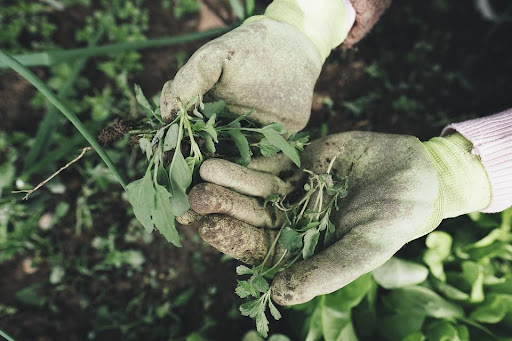Gardening is a fantastic hobby that’s great for health and well-being, and anyone can enjoy it. While it does involve some movement, older people or those with physical disabilities can still take pleasure in it.
That’s what this guide is for! Here, we’ve put together a list of ways to make this outdoor activity more engaging and less demanding. They’re perfect if you’re looking to help your parents get their hands in the soil at their convenience.
Try Raised Garden Beds
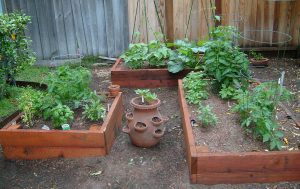
A raised garden bed is a planting area lifted off the ground and framed with wood. By raising the bed, you don’t have to bend down or kneel as much when planting, weeding, watering, or harvesting—everything is at a more convenient height.
This also means less strain on your back and knees, which is ideal (if you’re) for older or have mobility issues. And it’s easier to manage the soil and keep things tidy, so that’s a plus!
Give Vertical Gardening a Go
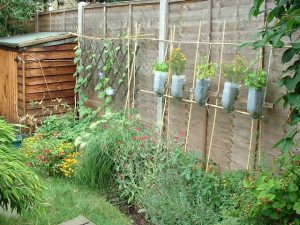
Vertical gardening is where plants grow along vertical surfaces instead of sprawling across the ground. This growing technique includes trellises, wall planters, and hanging baskets designed to maximise floor space. For instance, a garden arch trellis can be used for climbing plants or wall-mounted planters to cultivate herbs or small vegetables. Perhaps hang baskets from hooks to support trailing plants like tomatoes.
What we like about this method is it becomes more accessible for those who use wheelchairs or have trouble moving around. You cut down on bending or stooping by raising your plants to eye level or making them easy to reach. Vertical gardening is also a clever alternative for areas where garden beds wouldn’t fit, like small patios or balconies.
Create an Open Pathway
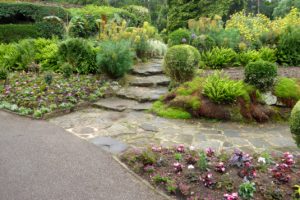
(Image Credit: Wikimedia Commons)
An open garden pathway is a clear, unobstructed route that makes it easy to get around your green space. It’s designed for everyone, including walkers, wheelchairs, and other mobility aids.
For elderly gardeners, especially those with arthritis, getting around longer distances or on uneven surfaces can be a bit of a struggle. But with wide pathways, there’s ample room for walkers and wheelchairs to pass without bumping into each other. The flat and even surfaces also help minimise the risk of tripping. This way, everyone can get stuck into their gardening, which brings a lovely sense of joy and fulfilment.
Install an Automatic Watering System
An automatic watering system is a setup that takes water from the tap to your plants through a network of narrow pipes and outlets, all cleverly hidden in your garden or greenhouse. It can also come in the form of drip irrigation or soaker hoses. Either way, this method means you won’t have to lug around heavy watering cans or hoses, reducing physical strain. It’s a brilliant addition that makes sure your plants get consistent moisture without the hassle of manual watering.
Get Kneeling Pads and Garden Mats
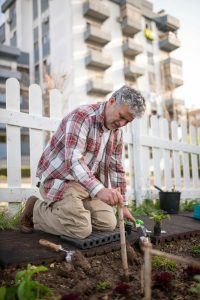
Gardening usually means a fair bit of sitting, kneeling, or bending down. Staying in those positions for too long can cause soreness or stiffness in your knees and back. If you find yourself dealing with back or knee pain, using a kneeler or a garden mat can do wonders.
These garden tools provide a comfy cushion that supports your knees, joints, and back. With one, you can work for longer without the discomfort or struggle of getting back up.
Tip: Keep your kneeler or mat alongside your gardening tools in your garden storage or potting shed so they’re easy to grab when you need them.
Make Use of Sensory Therapy
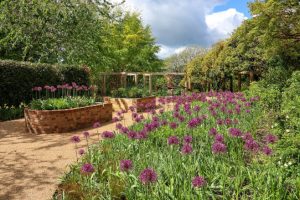
(Image Credit: Wikimedia Commons)
Sensory gardens are more than just spots for plants; they’re therapeutic spaces for relaxation, sensory stimulation, and overall well-being. Transforming your garden into one might take a bit of time, but every step is worth it!
You can start by planting flowers and herbs like lavender and rosemary in raised beds or vertical gardens. They have lovely scents that engage the sense of smell. In another bed or container, add plants with different textures, such as fuzzy lamb’s ear or velvety petunias.
You could also include a small fountain or birdbath to bring in the soothing sound of flowing water. Wind chimes are a nice touch, too, creating gentle sounds when the breeze picks up. Hang one in your garden shed, on the pergola, or from a tree branch.
To finish off the setup, pop some garden benches under the trees to create shaded spots for rest. These areas are perfect for unwinding after tending to the plants or just enjoying the view of your green space.
We hope these ideas help you create a garden that’s easier to work in and accessible for everyone! Up next on your reading list: Different Ways to Make Money from Your Garden

